Filters: Collection:"ir_uspace"
| Creator | Title | Description | Subject | Date | ||
|---|---|---|---|---|---|---|
| 51 | 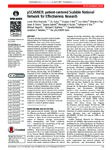 | Nebeker, Jonathan R. | pSCANNER: Patient-centered scalable national network for effectiveness research | This article describes the patient-centered Scalable National Network for Effectiveness Research (pSCANNER), which is part of the recently formed PCORnet, a national network composed of learning healthcare systems and patient-powered research networks funded by the Patient Centered Outcomes Research... | 2014-01-01 | |
| 52 | 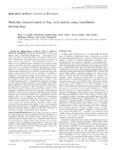 | Inagaki, Ryota T.; Raghuraman, Shrlnlvasan; Chase, Kevin; Steele, Theresa; Zornik, Erilk; Olivera, Baldomero; Yamaguchi, Ayako | Molecular characterization of frog vocal neurons using pharmacological constellation. | constellation pharmacology; motor programs; parabrachial nucleus; premotor neurons; vocalizations | 2020 | |
| 53 | 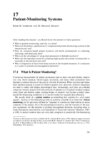 | Gardner, Reed M. | Patient-Monitoring Systems | Biomedical Informatics | 2006 | |
| 54 |  | Wittwer, Carl T. | Genotyping accuracy of high-resolution DNA melting instruments | High-resolution DNA melting is a closed-tube method for genotyping and variant scanning that depends on the thermal stability of PCR-generated products. Instruments vary in thermal precision, sample format, melting rates, acquisition, and software. Instrument genotyping accuracy has not been assesse... | 2014-01-01 | |
| 55 |  | Hansen, Charles D. | Knowledge-based out-of-core algorithms for data management in visualization | Data management is the very first issue in handling very large datasets. Many existing out-of-core algorithms used in visualization are closely coupled with application-specific logic. This paper presents two knowledgebased out-of-core prefetching algorithms that do not use hard-coded rendering-re... | 2006 | |
| 56 |  | Olivera, Baldomero M.; Bandyopadhyay, Pradip K. | Molecular phylogeny of some Indo-Pacific genera in the subfamily Turrinae H. Adams and A. Adams, 1853 (1838) (Gastropoda: Neogastropoda) | We have carried out a phylogenetic analysis of a group of Indo-Pacific species in the subfamily Turrinae (Swainson, 1840) using 128 mitoehondrial ribosomal RNA gene sequcnces Most of the species analyzed are convenlionally assigned to one of there Lophiotoma Casey, 1904. The inolecular anaysis revea... | Turrinae; Indo-Pacific; Mitochondrial RNA; Molecular phylogeny | 2007 |
| 57 |  | Shapiro, Michael D. | Divergence, convergence, and the ancestry of feral populations in the domestic rock pigeon | Domestic pigeons are spectacularly diverse and exhibit variation in more traits than any other bird species [1]. In The Origin of Species, Charles Darwin repeatedly calls attention to the striking variation among domestic pigeon breeds - generated by thousands of years of artificial selection on a s... | 2010 | |
| 58 | 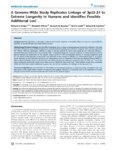 | Kerber, Richard A. | A genome-wide study replicates linkage of 3p22-24 to extreme longevity in humans and identifies possible additional loci | Background: Although there is abundant evidence that human longevity is heritable, efforts to map loci responsible for variation in human lifespan have had limited success. Methodology/Principal Findings: We identified individuals from a large multigenerational population database (the Utah Populati... | 2012-01-01 | |
| 59 |  | Downes, Stephen M. | Heredity and heritability | Philosophical discussions of heredity have focused on the sustainability of heritability analyses and more recently on the units of heredity. Here I introduce the concept of heritability and the problems associated with it. Next the units of heredity discussion is introduced. Here I consider alterna... | DNA; Heredity; Heritability | 2004-07-15 |
| 60 |  | Bohs, Lynn A. | ITS phylogeny of Balsamorhiza and Wyethia (Asteraceae: Heliantheae) | The relationships among the species of Balsamorhiza and Wyethia (Asteraceae: Heliantheae) were examined using data from the internal transcribed spacer (ITS) region of the nuclear ribosomal DNA. The ITS sequences were obtained from nine species of Balsamorhiza and 14 species of Wyethia as well as se... | Asteraceae; Balsamorhiza; Heliantheae; Internal transcribed spacer; ITS; Molecular phylogeny; Wvethi | 2003 |
| 61 |  | Gesteland, Raymond F.; Atkins, John F.; Baranov, Pavel V. | Diverse bacterial genomes encode an operon of two genes, one of which is an unusual class-I release factor that potentially recognizes atypical mRNA signals other than normal stop codons | ABSTRACT: Background: While all codons that specify amino acids are universally recognized by tRNA molecules, codons signaling termination of translation are recognized by proteins known as class-I release factors (RF). In most eukaryotes and archaea a single RF accomplishes termination at all three... | Class-I release factors; RF1; RF2; Bacterial genomes | 2006 |
| 62 | 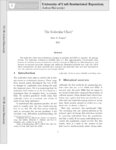 | Rogers, Alan R. | The molecular clock | The molecular clock uses evolutionary changes in proteins and DNA to measure the passage of time. Yet molecular evolution is clocklike only to a first approximation. Uncertainties arise because of variation in rates of molecular evolution, because of difficulty in calibrating clocks, and because we ... | 2013-01-01 | |
| 63 |  | Macleod, Robert S. | Sensitivity and specificity of substrate mapping: An in silico framework for the evaluation of electroanatomical substrate mapping strategies | Background - Voltage mapping is an important tool for characterizing proarrhythmic electrophysiological substrate, yet it is subject to geometric factors that influence bipolar amplitudes and thus compromise performance. The aim of this study was to characterize the impact of catheter orientation on... | 2014-01-01 | |
| 64 |  | Gesteland, Raymond F.; Baranov, Pavel V.; Atkins, John F.; Hammer, Andrew W. | Transcriptional slippage in bacteria: distribution in sequenced genomes and utilization in IS element gene expression | ABSTRACT: Background: Transcription slippage occurs on certain patterns of repeat mononucleotides, resulting in synthesis of a heterogeneous population of mRNAs. Individual mRNA molecules within this population differ in the number of nucleotides they contain that are not specified by the templat... | Transcription slippage; Bacterial genomes; IS element genes | 2005 |
| 65 | 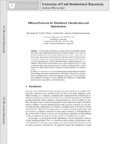 | Venkatasubramanian, Suresh | Efficient protocols for distributed classification and optimization | A recent paper [1] proposes a general model for distributed learning that bounds the communication required for learning classifiers with e error on linearly separable data adversarially distributed across nodes. In this work, we develop key improvements and extensions to this basic model. Our first... | 2012-01-01 | |
| 66 |  | Baehr, Wolfgang | Identification and light-dependent translocation of a cone-specific antigen, (Cone Arrestin) recognized by monoclonal antibody 7G6 | PURPOSE: To elucidate the antigen recognized by monoclonal antibody (mAb) 7G6, a widely used cone-specific marker. METHODS: 7G6 immunocytochemistry was performed on sections of human, primate, and bovine retina. The antigen was immunoprecipitated from human retinal lysates and purified with protein ... | Cones (Retina); Molecular Sequence Data; Phototransduction | 2003 |
| 67 | 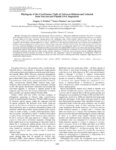 | Bohs, Lynn A. | Phylogeny of the carolinense clade of solanum (Solanaceae) inferred from nuclear and plastid DNA sequences | The large and economically important genus Solanum contains ca. 1,400 species distributed worldwide. One of the 12-14 major clades identified in the genus is the Leptostemonum clade, or the "spiny solanums." Previous molecular phylogenetic studies have identified 14 major clades in the spiny solanum... | 2014-01-01 | |
| 68 | 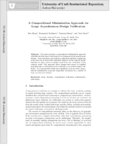 | Myers, Chris J. | A compositional minimization approach for large asynchronous design verification | This paper presents a compositional minimization approach with efficient state space reductions for verifying non-trivial asynchronous designs. These reductions can result in a reduced model that contains the exact same set of observably equivalent behavior in the original model, therefore no false ... | 2012-01-01 | |
| 69 |  | Adler, Frederick R. | Alternating host cell tropism shapes the persistence, evolution and coexistence of Epstein-Barr virus infections in human | Epstein-Barr virus (EBV) infects and can persist in a majority of people worldwide. Within an infected host, EBV targets two major cell types, B cells and epithelial cells, and viruses emerging from one cell type preferentially infect the other. We use mathematical models to understand why EBV infec... | 2011 | |
| 70 |  | Adler, Frederick R. | Alternating host cell tropism shapes the persistence, evolution and coexistence of Epstein-Barr virus infections in human | Epstein-Barr virus (EBV) infects and can persist in a majority of people worldwide. Within an infected host, EBV targets two major cell types, B cells and epithelial cells, and viruses emerging from one cell type preferentially infect the other. We use mathematical models to understand why EBV infec... | 2010 | |
| 71 | 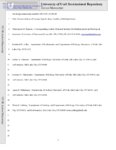 | Adler, Frederick R. | Deconvolution of isotope signals from bundles of multiple hairs | Segmental analysis of hair has been used in diverse fields ranging from forensics to ecology to measure the concentration of substances such as drugs and isotopes. Multiple hairs are typically combined into a bundle for segmental analysis to obtain a high-resolution series of measurements. Individua... | 2014-01-01 | |
| 72 | 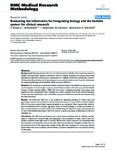 | Mitchell, Joyce A. | Evaluating the informatics for integrating biology and the bedside system for clinical research | Background: Selecting patient cohorts is a critical, iterative, and often time-consuming aspect of studies involving human subjects; informatics tools for helping streamline the process have been identified as important infrastructure components for enabling clinical and translational research. We d... | 2009-01-01 | |
| 73 |  | Mower, Allyson | Exploring publishing patterns at a large research university: Implications for library practice | Objective - The research project sought to explore the value of data on publication patterns for decision-making regarding scholarly communications and collection development programs at a research-intensive post-secondary institution, the University of Utah in the United States. Methods - Publicati... | 2012-01-01 | |
| 74 |  | Bohs, Lynn A. | Four-gene study of evolutionary relationships in Solanum section Acanthophora | The "spiny solanums," Solanum subgenus Leptostemonum (Solanaceae), comprise a large lineage with over 350 species and include the cultivated eggplant, Solanum melongena. Despite the importance of this subgenus, phylogenetic relationships among these taxa are currently unclear. The present research... | Acanthophora; Granule-bound starch synthase gene; GBSSI; ITS; Internal transcribed spacer; Solanum; trnS-trnG; trnT-trnF; Waxy | 2005 |
| 75 |  | Baehr, Wolfgang | Novel GCAP1 missense mutation (L151F) in a large family with autosomal dominant cone-rod dystrophy (adCORD) | PURPOSE: To elucidate the phenotypic and biochemical characteristics of a novel mutation associated with autosomal dominant cone-rod dystrophy (adCORD). METHODS: Twenty-three family members of a CORD pedigree underwent clinical examinations, including visual acuity tests, standardized full-field ERG... | Polymorphism, Single-Stranded Conformational; Guanylate Cyclase-Activating Proteins; DNA Mutational Analysis | 2005 |
